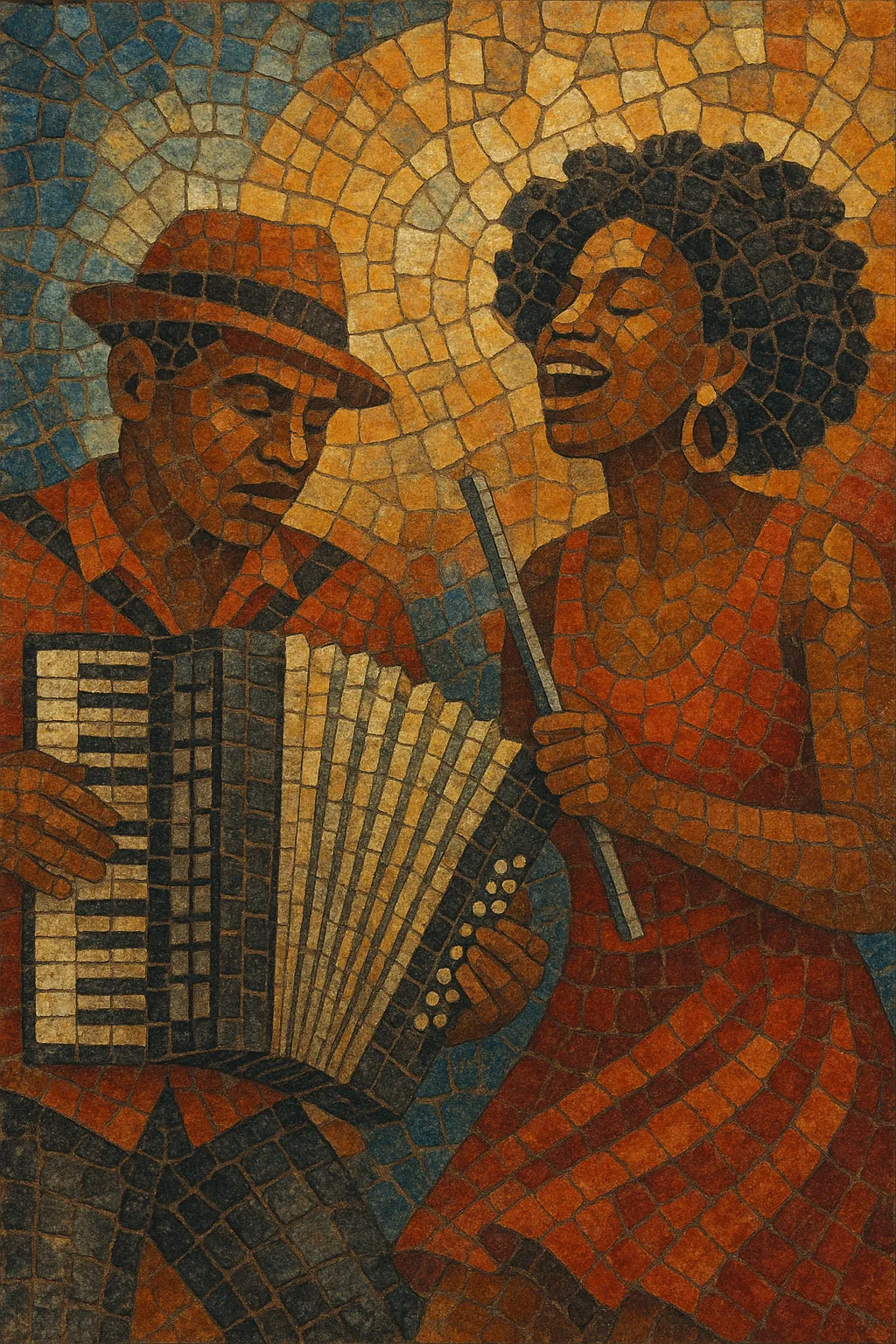Funaná is a fast, accordion-driven dance music from the island of Santiago in Cape Verde. It is built around the diatonic accordion (locally called gaita) and the ferrinho, a scraped metal rod that supplies an unrelenting, syncopated rhythm. The style is exuberant, rural in origin, and often features social commentary sung in Cape Verdean Creole.
Traditionally, funaná was played at community gatherings and dances, with melodies that move briskly over simple harmonic progressions while the ferrinho and hand percussion lock in a propulsive 2/4 pulse. In its contemporary form, the genre frequently adds electric bass, drum kit, and keyboards, retaining the core energy while expanding its sound for modern stages.
Funaná emerged in the early 20th century on Santiago, where European diatonic accordions met local dance traditions. Rural musicians adapted polka-, mazurka-, and schottische-like dance patterns into a distinctly Cape Verdean groove, with the ferrinho providing a scraping, driving counter-rhythm. Lyrics, delivered in Santiago Creole, often narrated everyday life, humor, and social critique.
Under Portuguese colonial rule, overtly "African"-coded musical practices were discouraged in urban spaces and on official media. As a result, funaná thrived informally at village festivities, persisting through oral transmission rather than through commercial recordings.
After Cape Verde’s independence in 1975, funaná gained visibility. In the 1980s, groups such as Bulimundo modernized the style: retaining gaita and ferrinho while adding drum kit, electric bass, and keyboards. By the 1990s, bands like Ferro Gaita brought funaná to larger audiences at home and in the diaspora, issuing recordings that emphasized speed, virtuosity, and communal energy.
From the 2000s onward, archival and contemporary releases spotlighted funaná internationally. Reissues and tours (including projects centered on masters such as Bitori and Codé di Dona) helped present the genre’s traditional core and its modern, electrified variants to world-music and dance audiences.
Contemporary funaná balances tradition and innovation: village-based ensembles still play acoustic sets, while stage bands use modern production for clubs and festivals. Across both settings, the music’s essence remains its rushing accordion melodies, relentless ferrinho groove, and celebratory call to dance.


